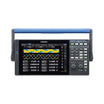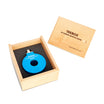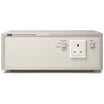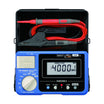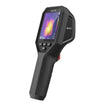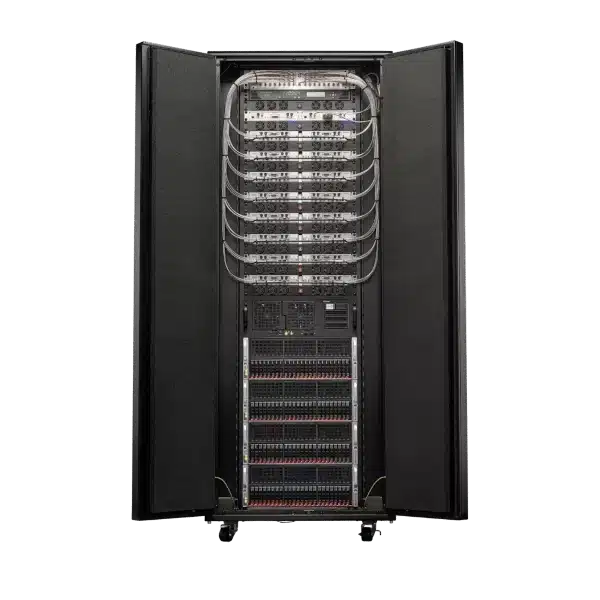
Safran Skydel Wavefront Software-defined CRPA Test System
Use our chat for personal support or contact us via +45 31 33 18 19 or salg@GOmeasure.dk
- Scalable from 2 to 16 multi-frequency antenna elements
- – 1 to 4 frequencies (L1, L2, L5 and E6)
- – GNSS and Interference combined outputs
- Interference: Jamming, spoofing, and repeating
- – Integrated into the software (GUI and API)
- – Simultaneously simulate multiple threats
- – Dynamic transmitters with user-defined waveforms
- Continuous phase synchronization
- – Real-time automated synchronization procedure
- – Phase coherency: < 1⁰ (1-Sigma) – Target
- – Power offset: 0.5 dB
- – Very fast starting time (< 30 s)
Discover the possibilities
More information
Description
Safran Skydel Wavefront Software-defined CRPA Test System
The Safran Skydel Wavefront system is designed to test the jamming and spoofing resiliency of CRPA and multi-element electronic systems, as well as high dynamics applications.
When considering using any new device, it is important to test it prior to fielding − especially in applications like defense, where the stakes are high. It is critical to test these devices rigorously with a proper system that can achieve those testing capabilities.
The Safran Skydel Wavefront simulation method is the lowest cost option. Previously, simulation testing for CRPAs required very expensive and complex phase matrix equipment. If you have ever considered a wavefront simulator in the past but found it to be too costly or too complicated, it is worth taking another look, because innovation now allows us to make it accessible, efficient and powerful. Simulation also provides the flexibility to cover multiple test cases quickly, and it is conducive to fast iteration speeds.
Specs
- GNSS Constellations and Signals:
- GPS: L1-C/A, L1C, L1-P, L2-P, L2C, L5;
- NavIC;
- GLONASS: G1, G2;
- Galileo: E1, E5a, E5b, E6, E6PRS, E6 HAS, E5AltBOC, PRS-Noise, HAS-Noise;
- BeiDou: B1, B2, B1C, B2A;
- QZSS: L1-C/A, L2C, L5
- SBAS: WAAS, EGNOS, MSAS, GAGAN, SDCM
- Custom Signals
- 4 bi-frequency antenna elements
- 100s of jammers
- 2 spoofers
- 1 simulator controller
- 4 simulator nodes
- 2 high-end GPUs
- 10Gb ethernet cards
- 4 N310 SDRs
- 2 X300 SDRs
- 1 EC2OS reference clock
- 1 wavefront distribution module
- 1 soundproof rack
Advanced Interference Generation Module
Generation of simple and complex interference signals is easy with Skydel’s “advanced jammers” module. Using a dedicated RF output of an SDR, interference signals can then be mixed to the GNSS signals. The interference can either be in-band or out-of-band and be composed of many waveforms of different power levels.
- Multiple virtual transmitters with user defined trajectories and waveforms
- User-defined waveforms (Chirp, CW, BOC, BPSK, AWGN & pulse modulations combination)
- Transmit arbitrary IQ data from file
- Dynamics are applied to transmitted signals
Auto-Calibration
A continuous auto-calibration ensures high precision phase front alignment for CRPA antenna testing.
M-Code Simulation
Safran Skydel Wavefront is the most affordable secret-level Military Signal (M-Code) simulator available on the market today. Its patent-pending encryption management technique makes it a preferred simulator for national defense test labs.
Scalable Architecture
The system architecture can scale up and down depending on the number of elements and signals, which dictates the number of GPU’s, computers, and so forth. The architecture starts with having simulator nodes. Each node corresponds to an element of the CRPA and is dedicated to simulating all the signals for that specific element. So, if you were to have a seven-element CRPA, you would use seven nodes to accomplish the simulation.
Each node simulates the low power GNSS or “truth” signals, as well as the high-power signals such as jammers and spoofers. There are two different RF paths, which allows you to manage a huge dynamic range in power. Then the proper signals are sent to the RF distribution module at the bottom, where they are combined and brought to a specific element. The RF distribution module also provides a feedback loop to the simulator controller
Signal “Store and Analyze”
With the Safran Skydel Wavefront GNSS simulator, it is possible to record the simulated GNSS and interference signals onto a disk in the form of digital IQsample files. This functionality can be very useful to analyze the generated signal with external post-processing tool (ex: Matlab). The analysis can be done directly on the baseband signal, avoiding impairments introduced by the up/down conversion to/from RF (ex: increased noise floor, phase noise of the oscillator, etc..).
For more information: Safran
Click here for related products: GPS/GNSS Simulators
Specifications
Documents
Safran Skydel Wavefront Software-defined CRPA Test System
Datasheet:
Safran Skydel Wavefront DatasheetOptions
Video
Safran Skydel Wavefront Software-defined CRPA Test System
The Safran Skydel Wavefront system is designed to test the jamming and spoofing resiliency of CRPA and multi-element electronic systems, as well as high dynamics applications.
When considering using any new device, it is important to test it prior to fielding − especially in applications like defense, where the stakes are high. It is critical to test these devices rigorously with a proper system that can achieve those testing capabilities.
The Safran Skydel Wavefront simulation method is the lowest cost option. Previously, simulation testing for CRPAs required very expensive and complex phase matrix equipment. If you have ever considered a wavefront simulator in the past but found it to be too costly or too complicated, it is worth taking another look, because innovation now allows us to make it accessible, efficient and powerful. Simulation also provides the flexibility to cover multiple test cases quickly, and it is conducive to fast iteration speeds.
Specs
- GNSS Constellations and Signals:
- GPS: L1-C/A, L1C, L1-P, L2-P, L2C, L5;
- NavIC;
- GLONASS: G1, G2;
- Galileo: E1, E5a, E5b, E6, E6PRS, E6 HAS, E5AltBOC, PRS-Noise, HAS-Noise;
- BeiDou: B1, B2, B1C, B2A;
- QZSS: L1-C/A, L2C, L5
- SBAS: WAAS, EGNOS, MSAS, GAGAN, SDCM
- Custom Signals
- 4 bi-frequency antenna elements
- 100s of jammers
- 2 spoofers
- 1 simulator controller
- 4 simulator nodes
- 2 high-end GPUs
- 10Gb ethernet cards
- 4 N310 SDRs
- 2 X300 SDRs
- 1 EC2OS reference clock
- 1 wavefront distribution module
- 1 soundproof rack
Advanced Interference Generation Module
Generation of simple and complex interference signals is easy with Skydel’s “advanced jammers” module. Using a dedicated RF output of an SDR, interference signals can then be mixed to the GNSS signals. The interference can either be in-band or out-of-band and be composed of many waveforms of different power levels.
- Multiple virtual transmitters with user defined trajectories and waveforms
- User-defined waveforms (Chirp, CW, BOC, BPSK, AWGN & pulse modulations combination)
- Transmit arbitrary IQ data from file
- Dynamics are applied to transmitted signals
Auto-Calibration
A continuous auto-calibration ensures high precision phase front alignment for CRPA antenna testing.
M-Code Simulation
Safran Skydel Wavefront is the most affordable secret-level Military Signal (M-Code) simulator available on the market today. Its patent-pending encryption management technique makes it a preferred simulator for national defense test labs.
Scalable Architecture
The system architecture can scale up and down depending on the number of elements and signals, which dictates the number of GPU’s, computers, and so forth. The architecture starts with having simulator nodes. Each node corresponds to an element of the CRPA and is dedicated to simulating all the signals for that specific element. So, if you were to have a seven-element CRPA, you would use seven nodes to accomplish the simulation.
Each node simulates the low power GNSS or “truth” signals, as well as the high-power signals such as jammers and spoofers. There are two different RF paths, which allows you to manage a huge dynamic range in power. Then the proper signals are sent to the RF distribution module at the bottom, where they are combined and brought to a specific element. The RF distribution module also provides a feedback loop to the simulator controller
Signal “Store and Analyze”
With the Safran Skydel Wavefront GNSS simulator, it is possible to record the simulated GNSS and interference signals onto a disk in the form of digital IQsample files. This functionality can be very useful to analyze the generated signal with external post-processing tool (ex: Matlab). The analysis can be done directly on the baseband signal, avoiding impairments introduced by the up/down conversion to/from RF (ex: increased noise floor, phase noise of the oscillator, etc..).
For more information: Safran
Click here for related products: GPS/GNSS Simulators


